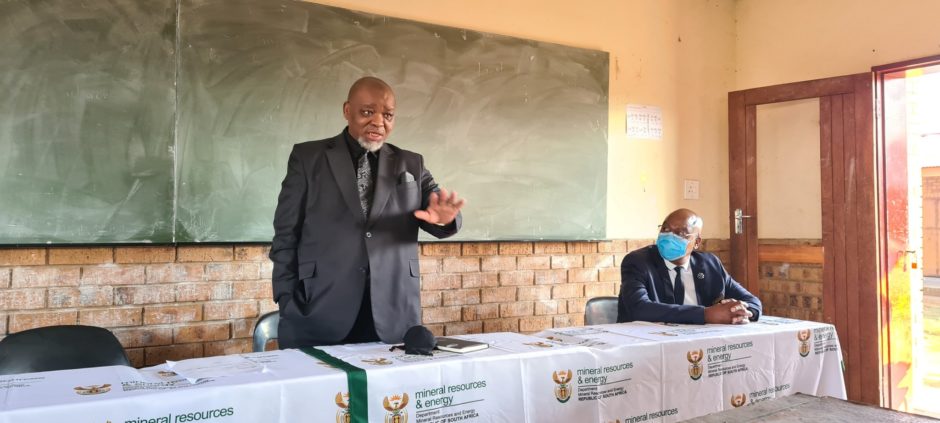
Creation of a strong national oil company is essential to meeting South Africa’s energy needs, Minister of Mineral and Energy Resources Gwede Mantashe has said.
Mantashe, talking during an Absa Group webinar, noted plans were under way to combine iGas, PetroSA and the Strategic Fuel Fund (SFF). The three companies are subsidiaries of the Central Energy Fund (CEF).
The government had launched a review of the three and found problems. There were eight people on the board of iGas, Mantashe said, and the company “employed two people. What’s the point? It’s not sustainable.”
He described PetroSA as an example of asset stripping. In 2014, the company had 27 billion rand ($1.9bn) in reserves he said. “When I walked in there, it had no reserves. It was battling to cope with day to day costs.”
A number of options were considered for PetroSA, he said, including an outright sale.
“When we did our deep dive, we said, ‘if we sell it, we would be meeting the objectives of the asset stripers’. They want us to sell for a song. They would be on the other side and make a killing.”
Eyes on potential
As such, the ministry decided a merger would be the best solution. PetroSA has a “lot of potential”, Mantashe continued.
“We’re now in cabinet and saying these are the options at our disposal. We have recommended one option. If that is approved, we will move into the build phase of the new national oil company,” the minister said.
Another official from the energy ministry noted that the initial focus for the new company would be as “leader in exploration but also playing in the midstream”. Expansion into the downstream is also being considered.
The new company would play a role in South Africa’s energy transition, as it shifts away from higher carbon options to lower carbon.
Plans on a merger have been under way for some time, although progress is slow.
Rompco pre-emption
Mantashe also provided some insights into CEF’s decision to pre-empt the sale of a stake in a gas pipeline from Mozambique.
“CEF exercised the pre-emption right on behalf of iGas. We believe we need a strong state for the private sector to flourish. If we have that pipeline, gas turbines in areas such as Mpumalanga are an option,” he said.
iGas and Companhia Mocambiçana de Gasoduto (CMG), a subsidiary of Empresa Nacional de Hidrocarbonetos (ENH), announced the pre-emption on June 27. They will acquire a 30% stake in the 865-km Rompco pipeline for 4.145bn rand ($289mn).
South Africa’s Reatile Group and African Infrastructure Investment Managers (AIIM) had teamed up to buy the 30% stake in a deal announced in May. The two companies had said the deal would allow them to raise capital and invest in Rompco.
The new deal would leave Sasol with 20%, while iGas and CMG had 40% each. CEF said it would finance the acquisition with past and future dividends from Rompco.
Mantashe, in his opening comments at the Absa event, highlighted the importance of gas for South Africa, saying it was a “major factor” in the transition. In addition to Mozambique supplies, the minister also noted the offshore finds in the Outeniqua Basin and shale gas in Beaufort West.
“We have noticed a new attack on gas as well, attacking fossil fuels as a source of energy,” he said. South Africa, as a developing economy, requires a mix of fuels, he said.
“Transition encompasses the concept of a journey, not an event. We must move through this transition with security of energy supply as we move to low carbon emissions.”
